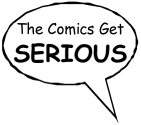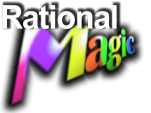

| The Magician's Nephew. By C. S. Lewis. Abridged and illustrated by Robin Lawrie. New York: HarperTrophy/HarperCollins, 1999. 64p. $10.95. ISBN 0-06-443515-6. |

|
GENRES: AUDIENCE: SYNOPSIS: EVALUATION: Such popularity means that adaptations are going to be held to very high standards. I've always felt that the books would make terrific graphic novels because of the vast amounts of imagery that lends itself to visual depictions. Thus, I was really looking forward to this book when I ordered it, because I wanted to see how the illustrator realized such fascinating things and places as dying Charn, the Wood Between the Worlds, Narnia before and after, Jadis the evil queen, Uncle Andrew, Fledge, etc. Boy, was I disappointed. The problem was twofold: 1. The adaptation itself absolutely stank. There are many passages where Lawrie didn't just trim Lewis's prose but rewrote it--and believe me, her rewrites are not on a par with Lewis. Many times she had to do a rewrite because she left out key incidents or passages that explained later occurrences, so she had to summarize what happened. UGH!!! Little human touches in the book, like the quiet bottle of ginger beer that Polly drank in her "cave," or the markings the kids made to identify the London pool in the Wood Between the Worlds, have been entirely excised. More important issues, like Jadis's loss of power in London, Digory's lie that he was compelled to ring the bell that freed Jadis, or exactly why the Talking Beasts decided Uncle Andrew was a tree, are also omitted or glossed over. (Indeed, except for Fledge and Aslan, no beast actually talks in this book, except when they first speak in one big horde after they're created. So much for that important aspect of Narnia.) And here's a howler: When Digory goes to fetch an apple from the Tree of Life, he's struck with the desire to eat the apple. In the real book, he sees a very odd bird in the tree, which is vividly described and is looking at him, and he decides not to try the apple after all. In this adaptation, "He saw a bird in the tree [the illustration is barely visible], and later he would be glad he hadn't eaten the apple." Jeez! Talk about trashing Lewis! One last thing--after Uncle Andrew is put to sleep, he vanishes from the book completely. Guess Aslan didn't bother to send him home.... 2. The artwork was entirely inappropriate. I got the sense that a regular old illustrator was employed, rather than someone who understood what sequential art was supposed to do. The art is very "children's bookish" and rather amateurish in spots. There are a lot of talking heads in profile, three-quarters, or straight-on. The characters are stiff--the kids have no character in their faces at all--and lines to indicate movement are absent. Most of the pages are framed in some fashion (e.g., the "burgeoning Narnia" pages are framed with flowers and greenery), which wastes huge amounts of space. There was an obvious attempt to be arty, but Lawrie just isn't good enough to make the images compelling; they're mostly just silly. And the decisions about what to depict and how to depict it were very bad. For example: why do the images of Jadis riding the cab-horse and Digory switching universes take up two whole pages each, while the Wood Between the Worlds is never truly illustrated (and its properties are never explained)? Why is Charn that vile salmon color? Why is Uncle Andrew's expression in perpetual smirk? Why are so many things presented in prose rather than visually (e.g., the creation of all the nighttime parts of Narnia, which just cries out to be shown)? Indeed, why do a graphic novel if half the stuff is still just presented as prose? I tell ya, just rereading the text made me think of a hundred better ways to depict everything in this book. Anyone wanna work with me?
I guess this book would be good for completists and for kids who will not read all-text books. But the original Magician's Nephew, with the small but vastly superior illustrations that appear on the first page of every new chapter, is far preferable to this wrongheaded offering. I couldn't find a single other review of it on the Internet (Amazon lists it but all the reviews are for the text edition of the book), and I got it for cheap via Half.com, so I suspect this book bombed as badly as it deserves to. If they adapted other books in the series, I hope they used an artist who understands sequential art and an adaptor who knows what's best to adapt! |
||||||
Return to Rational Magic Home
